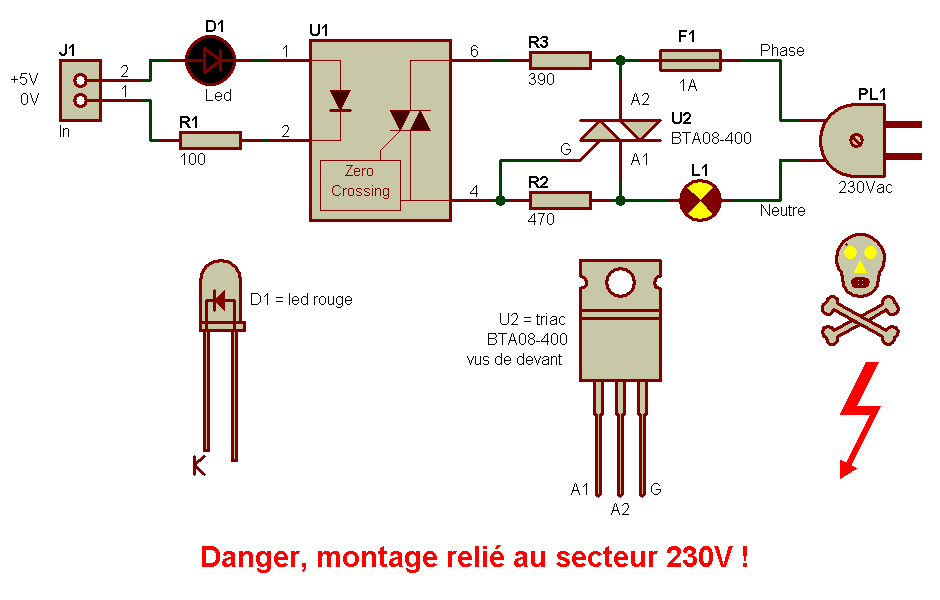rallysteve
Newbie level 6
Hi there, I am just finishing off my Micro-Controlled Light Dimmer system. However I am struggling to work out component values and connections for my Triac and Photo Triac.
I have a 5v pulse from my micro-controller to swich a triac at a varying point every half cycle. This will be connected to a photo-triac to isolate from AC, I have Vishay IL-420 for this. The triac I have to use with the system is a TIC225M. I realise that I need to use a 'snubbing circuit' and provide the correct gate current at the triac but I am struggling to work out what component values and connections to make. I dont want to mess up with mains voltage.
I am going to be operating a single 40W light bulb on 230V mains (UK) as this is only a prototype.
Can anyone help at all please?
Thanks
Steve
I have a 5v pulse from my micro-controller to swich a triac at a varying point every half cycle. This will be connected to a photo-triac to isolate from AC, I have Vishay IL-420 for this. The triac I have to use with the system is a TIC225M. I realise that I need to use a 'snubbing circuit' and provide the correct gate current at the triac but I am struggling to work out what component values and connections to make. I dont want to mess up with mains voltage.
I am going to be operating a single 40W light bulb on 230V mains (UK) as this is only a prototype.
Can anyone help at all please?
Thanks
Steve

